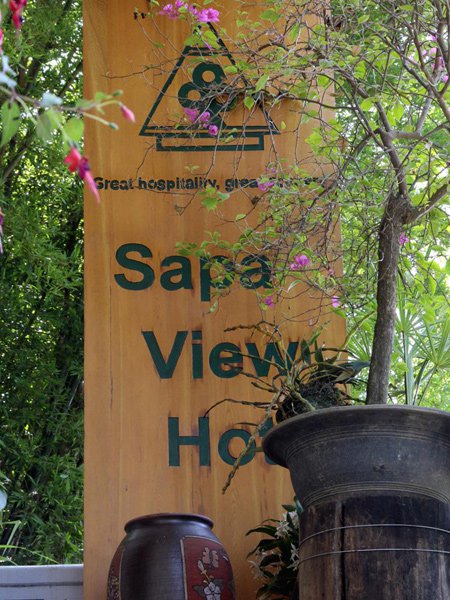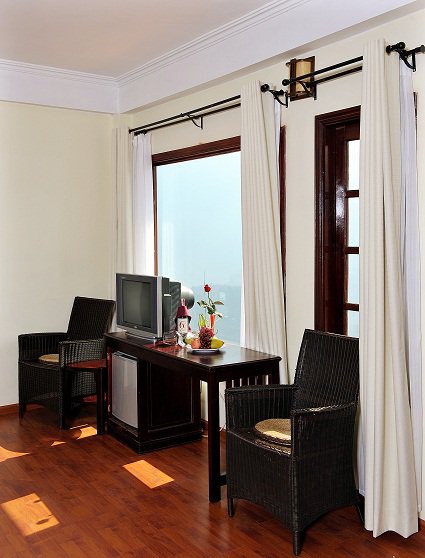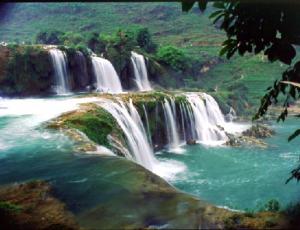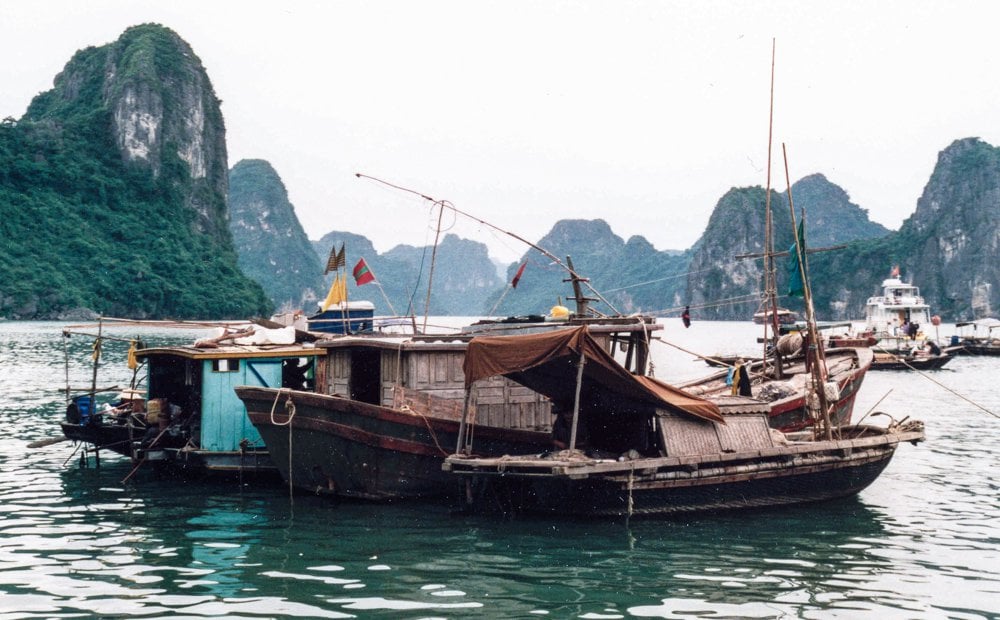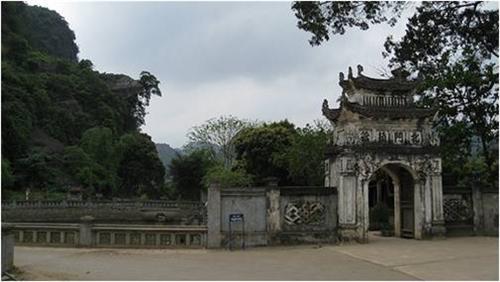







































Sa Pa
In Northwest Vietnam, lying close to the Chinese border, a frontier town and district known as SaPa is considered one of the major excursion routes from Hanoi because of its breathtaking landscapes, famous hiking destinations and quite interesting form of trade. The township of SaPa, better known as the “ Tonkin’s Alps” beautifully sits on a hill top at 1,600m above sea level, viewing over the Muong Hoa valley. SaPa is also the starting point for many climbers and discoverers who want to reach the top of Fansipan Mountain, the tallest peak in Vietnam.
The spectacular scenery that surrounds the town includes cascading rice terraces that spill down the mountains like a patchwork quilt. The valleys and villages around SaPa hosts a number of hill-tribe people who wander in to town to buy, sell and trade. Home to a great diversity of ethnic minorities, with mainly 5 ethnic groups settling in the district, of which the H’mong and Dzao groups has the most population, a few percentage of Tays and Giays and a small number of Xa Pho also inhabit the area. A number of these tribes settle in SaPa town, while most of them are scattered in small communes throughout the district.
With the advent of tourism, better roads were constructed, many streets have been given names, countless new hotels have stood, the electricity supply is a lot reliable, food production has remarkably improved and general developments is evident in the whole district. The town has all the amenities to provide convenience both to locals and tourists including a number of travel offices, an agribank, church, police station, hospital, several drugstores, a post office, photo shops, laundry service joints and internet cafes.
Getting Around SaPa
The town of SaPa is generally small. Exploring one side of the town to other could be done by foot and even as little as 30 minutes of your time. However, if you want to make it to the hill tribe villages, renting a bike (90,000 VND/day) is advised, or if more convenience is desired, you can take the bike taxi.
Things to Do and See in SaPa
SaPa Market Located at the center of the town, SaPa market is open everyday but is most crowded on Saturdays. Here, you can witness local hill tribe people H’mong and Dzao trading their produce or have their colorful clothing and souvenirs up for barter.
Cat Cat, Ma Tra & Ta Phin Villages Most travel tours offer half-day visits to Cat Cat village, where the black H’Mong dwells, which lies about 3 km West of SaPa town. You can stretch your excursion or go for a full day hike all the way to Ma Tra & Ta Phin Villages which lies 10 km out of SaPa. From these treks, you can enjoy a panorama view of valley’s entirety.
Silver Waterfalls and Tram Ton Pass 14 km North of SaPa is the famous Silver Waterfalls. 4 km further north of the same route lies the highest mountain pass of Vietnam, Tram Ton, also known to the locals as Heaven Gate. 1900m high, it connects SaPa to Lai Chau. A road ride on the pass offers great view of the magnificent Fansipan on the other side of the valley with the immense sight of lush forests.
Fansipan Mountain Sitting imposingly on the Hoang Lien Son range of mountains, at the height 3,143m, about 9km southwest of SaPa Township, Fansipan is known as Vietnam’s highest peak. Fit and experienced hikers may trail the mountain for a real life discovery. With its treacherous track conditions and lack of accommodations en route, Fansipan trail takes about three to four days to complete and is undeniably challenging. However, the rewards are breathtaking.
Muong Hoa River, Muong Hoa Valley & Ban Ho Village Starting from the foot of the Silver Waterfall is a small serene stream known as the Muong Hoa River, weaving its way along the bottom of two mountain ranges known as the Muong Hoa Valley. Located 14 km Northwest of SaPa and stretching 30 km further to the South, the valley is known for the picturesque scenes witnessed along its tracks and for cradling the largest rice farm growing in SaPa district.
The Muong Hoa River winds its way around Ban Ho Village, providing fresh water for its rice and bean paddies. The village is home to the Tay ethnic group. With houses impressively built on stilts in unique structures, it is a romantic and wonderful place to experience home stay.
Best Time To Come
The best time to witness the scenic beauty of SaPa is between March to May. January and February are mostly cold and foggy while the rainy season starts in June and stretches up to August every year. Periods between September to mid-December is another good time to be in SaPa.
How to get to SaPa
Located 380 km. from Hanoi, getting to SaPa by Train is the easiest route.
Many travel agencies offer overnight trips from Hanoi to Lao Cai, of which, the train journey is immediately followed by a minibus transfer to SaPa. With all transportations and accommodations pre-arranged, plus the advantage of having a tour guide, it is a more convenient way to get to this interesting town. Tour packages vary with every travel agency ranging from budget options to luxury holiday packages and could range from a few days to a week, depending on the traveler. Tour plans that include trekking and adventure excursions usually take longer.
But if you prefer to get to SaPa by yourself and skip signing up for tour packages, you can take the train from Hanoi that heads to Lao Cai. However, most of their sleeper seats are reserved for pre-paid group tours arranged by travel agencies, so it might not be easy to avail of the accommodation. But you may buy second class sleeper tickets at the train station without make-up. Seat tickets are as easily obtained, and since the trip is a bit lengthy, make sure you pay for the soft seats.
Once you reach Lao Cai, a number of minibuses are parked at the train station destined for SaPa (30,000 VND).
The spectacular scenery that surrounds the town includes cascading rice terraces that spill down the mountains like a patchwork quilt. The valleys and villages around SaPa hosts a number of hill-tribe people who wander in to town to buy, sell and trade. Home to a great diversity of ethnic minorities, with mainly 5 ethnic groups settling in the district, of which the H’mong and Dzao groups has the most population, a few percentage of Tays and Giays and a small number of Xa Pho also inhabit the area. A number of these tribes settle in SaPa town, while most of them are scattered in small communes throughout the district.
With the advent of tourism, better roads were constructed, many streets have been given names, countless new hotels have stood, the electricity supply is a lot reliable, food production has remarkably improved and general developments is evident in the whole district. The town has all the amenities to provide convenience both to locals and tourists including a number of travel offices, an agribank, church, police station, hospital, several drugstores, a post office, photo shops, laundry service joints and internet cafes.
Getting Around SaPa
The town of SaPa is generally small. Exploring one side of the town to other could be done by foot and even as little as 30 minutes of your time. However, if you want to make it to the hill tribe villages, renting a bike (90,000 VND/day) is advised, or if more convenience is desired, you can take the bike taxi.
Things to Do and See in SaPa
SaPa Market Located at the center of the town, SaPa market is open everyday but is most crowded on Saturdays. Here, you can witness local hill tribe people H’mong and Dzao trading their produce or have their colorful clothing and souvenirs up for barter.
Cat Cat, Ma Tra & Ta Phin Villages Most travel tours offer half-day visits to Cat Cat village, where the black H’Mong dwells, which lies about 3 km West of SaPa town. You can stretch your excursion or go for a full day hike all the way to Ma Tra & Ta Phin Villages which lies 10 km out of SaPa. From these treks, you can enjoy a panorama view of valley’s entirety.
Silver Waterfalls and Tram Ton Pass 14 km North of SaPa is the famous Silver Waterfalls. 4 km further north of the same route lies the highest mountain pass of Vietnam, Tram Ton, also known to the locals as Heaven Gate. 1900m high, it connects SaPa to Lai Chau. A road ride on the pass offers great view of the magnificent Fansipan on the other side of the valley with the immense sight of lush forests.
Fansipan Mountain Sitting imposingly on the Hoang Lien Son range of mountains, at the height 3,143m, about 9km southwest of SaPa Township, Fansipan is known as Vietnam’s highest peak. Fit and experienced hikers may trail the mountain for a real life discovery. With its treacherous track conditions and lack of accommodations en route, Fansipan trail takes about three to four days to complete and is undeniably challenging. However, the rewards are breathtaking.
Muong Hoa River, Muong Hoa Valley & Ban Ho Village Starting from the foot of the Silver Waterfall is a small serene stream known as the Muong Hoa River, weaving its way along the bottom of two mountain ranges known as the Muong Hoa Valley. Located 14 km Northwest of SaPa and stretching 30 km further to the South, the valley is known for the picturesque scenes witnessed along its tracks and for cradling the largest rice farm growing in SaPa district.
The Muong Hoa River winds its way around Ban Ho Village, providing fresh water for its rice and bean paddies. The village is home to the Tay ethnic group. With houses impressively built on stilts in unique structures, it is a romantic and wonderful place to experience home stay.
Best Time To Come
The best time to witness the scenic beauty of SaPa is between March to May. January and February are mostly cold and foggy while the rainy season starts in June and stretches up to August every year. Periods between September to mid-December is another good time to be in SaPa.
How to get to SaPa
Located 380 km. from Hanoi, getting to SaPa by Train is the easiest route.
Many travel agencies offer overnight trips from Hanoi to Lao Cai, of which, the train journey is immediately followed by a minibus transfer to SaPa. With all transportations and accommodations pre-arranged, plus the advantage of having a tour guide, it is a more convenient way to get to this interesting town. Tour packages vary with every travel agency ranging from budget options to luxury holiday packages and could range from a few days to a week, depending on the traveler. Tour plans that include trekking and adventure excursions usually take longer.
But if you prefer to get to SaPa by yourself and skip signing up for tour packages, you can take the train from Hanoi that heads to Lao Cai. However, most of their sleeper seats are reserved for pre-paid group tours arranged by travel agencies, so it might not be easy to avail of the accommodation. But you may buy second class sleeper tickets at the train station without make-up. Seat tickets are as easily obtained, and since the trip is a bit lengthy, make sure you pay for the soft seats.
Once you reach Lao Cai, a number of minibuses are parked at the train station destined for SaPa (30,000 VND).





